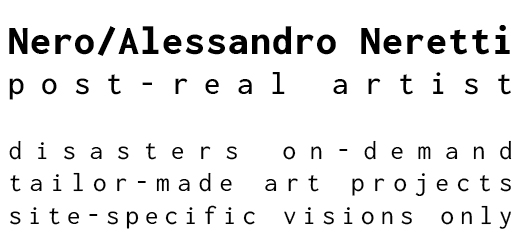Winner of the sculpture section
R.A.M. 08/09
Santa Maria delle Croci
Ravenna/IT
2009
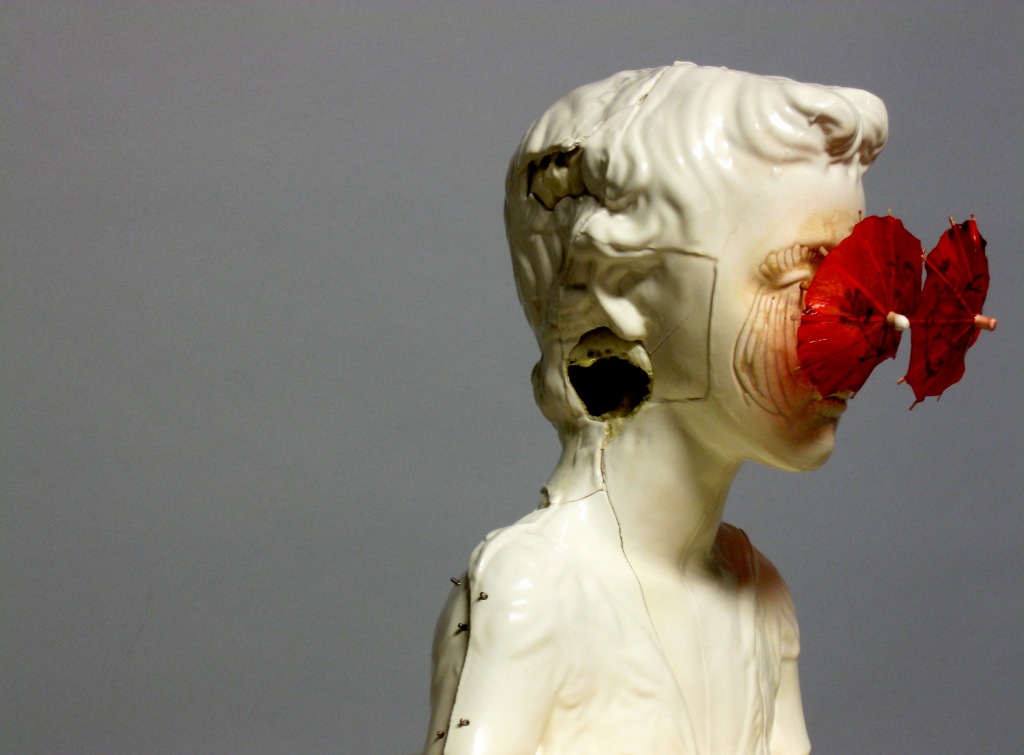
detail from | la vera storia di san giovannino ovvero consumandosi dietro una coltre di vita, 2009
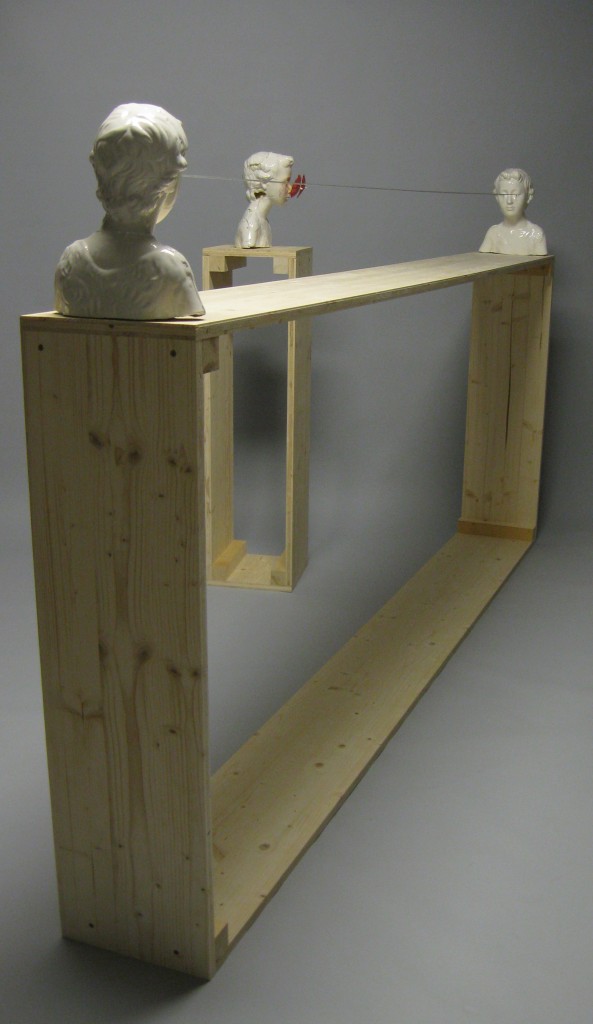
la vera storia di san giovannino ovvero consumandosi dietro una coltre di vita, 2009 | glazed earthenware, wood, steel, polyurethane, silicone, cocktail umbrellas | cm 191 x 277 x 143
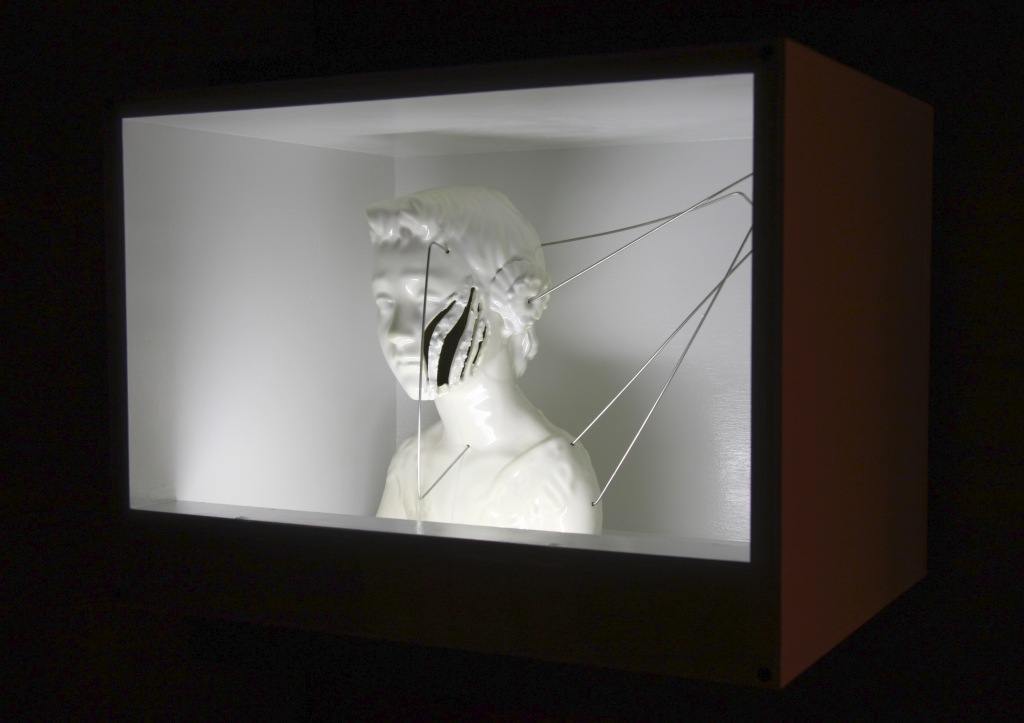
young guy in the box or thanks god it’s light, 2009 | wood, white paint, glazed earthenware, steel, neon light, plexiglas | cm 56 x 44 x 39
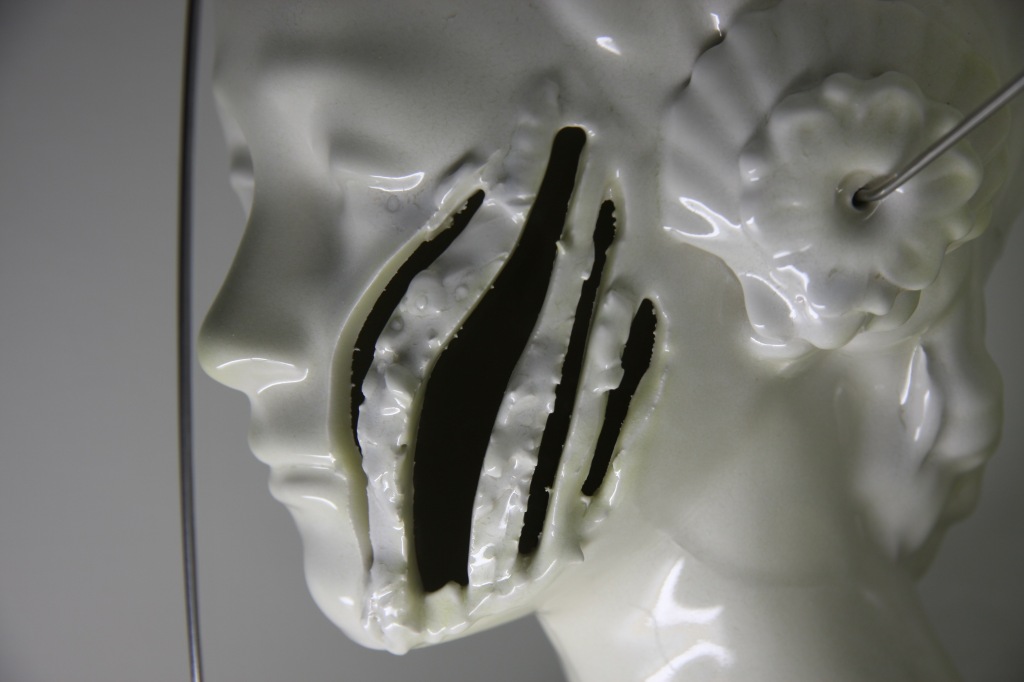
detail from | young guy in the box or thanks god it’s light, 2009
LAMBIRE I CONFINI DELLA VITA
(AN UND FÜR SICH)
Alberto Zanchetta
Remaining faithful to a pseudo-biography, NERO “appropriates” of the bust of San Giovannino (work attributed to Benedetto da Maiano) and he places it in a niche in the church of Santa Maria delle Croci in Ravenna in the same way as the original work appeared at its time in the church of Santa Maria Maddalena in Faenza. Argnani wrote about the San Giovannino that “art beats substance, in fact the adolescent forerunner looks alive, in the flesh and talking”. Even though we continue to believe in the immortality of soul and in the resurrection of the dead, we do not believe anymore in the possibility of giving life to statues. This is the reason that drove the Fidia in Le Chemin de Paradis by Maurras to commit suicide, since gods deprived him of the ability to give life to petrified figures. Nero – who turns the polish of the Carrara marble used by Maiano into the ice cold white of the ceramics typical of Faenza – persists in looking for something vital through the dissection of bodies/inanimate works. He wants to guess what the wonderful nature of the creation is: the pneuma, which is the philosophical “principle of life” of the ancient Greece. Scarring Hippocrates and Galen, the artist studies the form of art as morphology of life and the function as it was human physiology, by mixing aesthetic processes and biological ones on a makeshift anatomy table. Differently from the believers who commit their corpses to the Church, the artists commit their works to museums. Since there is quite a small difference between churchyards and galleries of plastic casts, NERO would like to profane and plunder museums in the same way as once graveyards were profaned and plundered. It is a criminal natural bent of an anatomical pathologist (of the Beauty) haunted by the knowledge (of Form as Meaning). So here is the San Giovannino, that becomes liable to lobotomies, demi-surgical obstinacy that insists on cuts and sutures in order to catch the anomaly, the almus [“nourishing, fruitful”] destined to violate the sacredness of art as well as the mystery of life. “Is art an alibi?” Baj asked himself. What is the motive, then? Is it to insufflating the remains of statues as a second Pygmalion? Is it passing directly from the artistic inspiration to the inspiriting [quoting Oppenheimer]? Is it finding out the secret that hides in centuries of history, when the Not-to-Be still aspired to To-be? It is evident that in Un Chien Andalou, Buñuel seizes a razor to cut off the eye of a young woman, while Nero – who is a dog expert – enjoys being pitiless towards the San Giovannino and blinds him using cocktail umbrellas. In this way he risks indeed to transcend the animistic spirit by means of a delirium tremens that badly hides the innermost fears. Is it a fear of meeting the eyes of the Saint, of looking at the remembrances that could awake from his bust?
